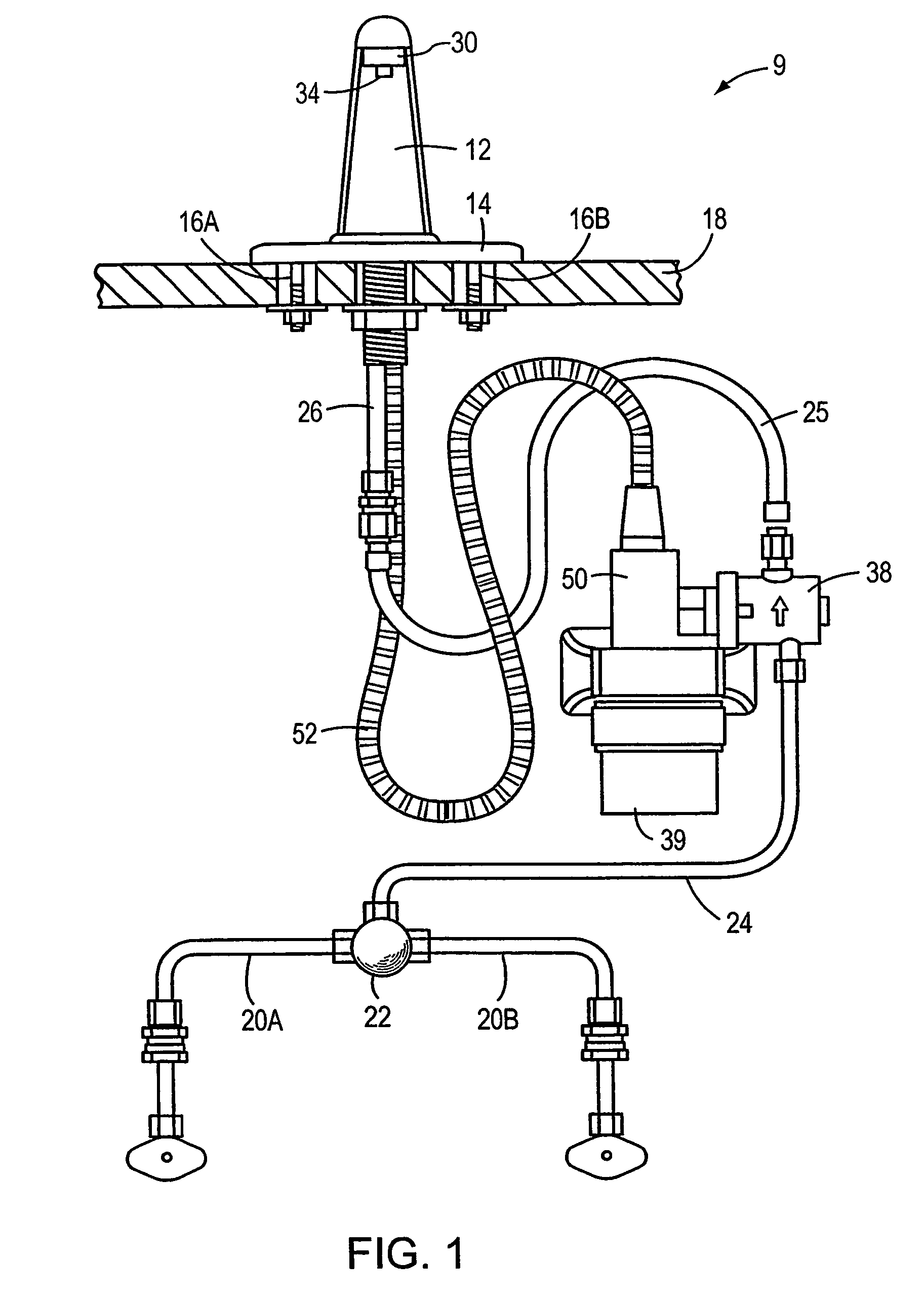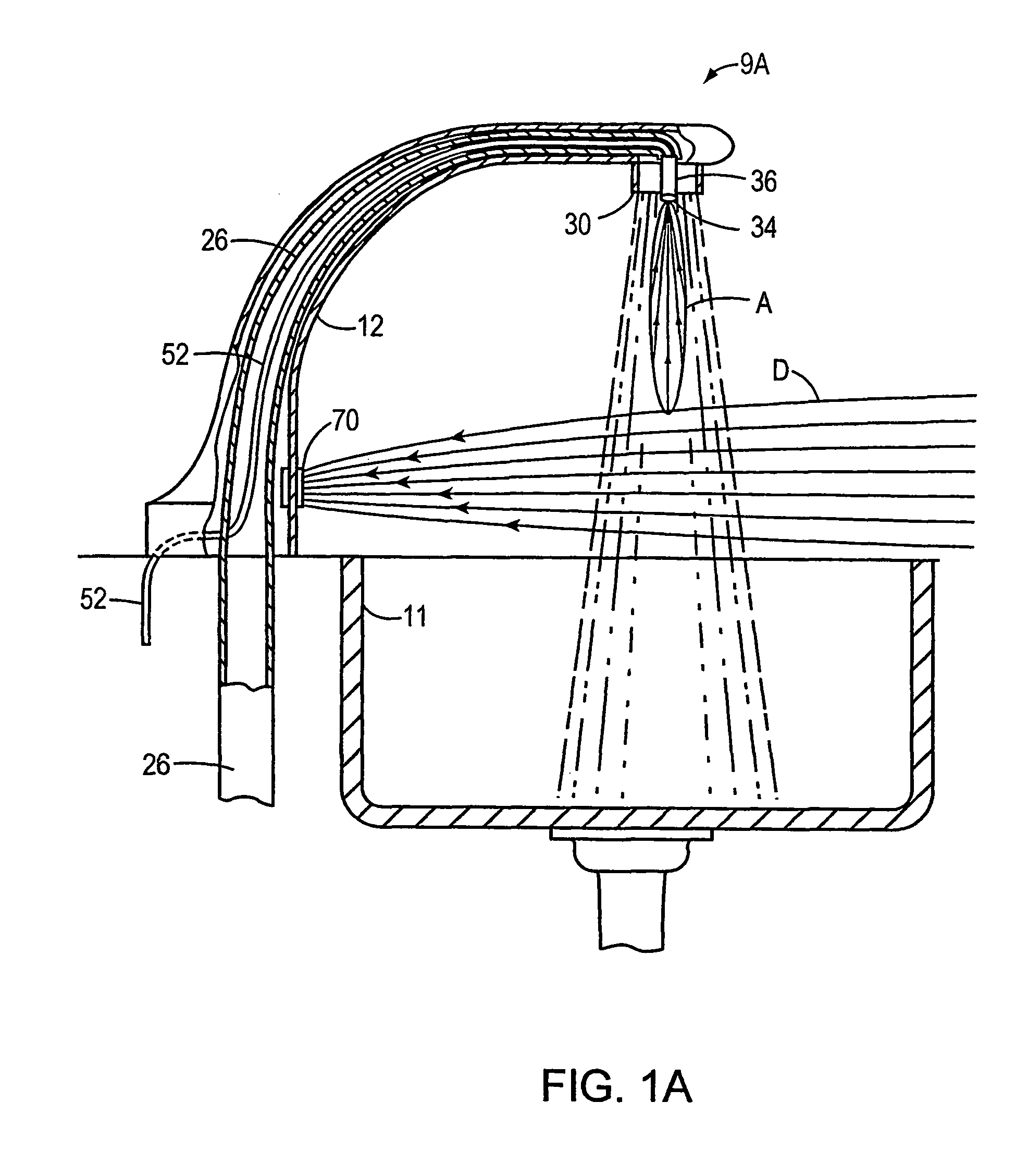Passive sensors and control algorithms for faucets and bathroom flushers
a technology of passive sensors and control algorithms, which is applied in the direction of operating means/releasing devices of valves, counting objects on conveyors, instruments, etc., can solve the problems of reducing the range of the emitter and/or the receiver, affecting the operation of the valve, and still providing a false trigger for the faucet. , to achieve the effect of increasing or decreasing or stabilizing
- Summary
- Abstract
- Description
- Claims
- Application Information
AI Technical Summary
Benefits of technology
Problems solved by technology
Method used
Image
Examples
Embodiment Construction
[0042]FIG. 1 shows an automatic faucet system 9 controlled by a sensor providing signals to a control circuit constructed and arranged to control operation of an automatic valve. The automatic valve, in turn, controls the flow of hot and cold water before or after mixing.
[0043]Automatic faucet system 9 includes a faucet body 12 and an aerator 30, including a sensor port 34. Automatic faucet system 9 also includes a faucet base 14 and screws 16A and 16B for attaching the faucet to a deck 18. A cold water pipe 20A and a hot water pipe 20B are connected to a mixing valve 22 providing a mixing ratio of hot and cold water (which ratio can be changed depending on the desired water temperature). Water conduit 24 connects mixing valve 22 to a solenoid valve 38. A flow control valve 38 controls water flow between water conduit 24 and a water conduit 25. Water conduit 25 connects valve 38 to a water conduit 26 partially located inside faucet body 12, as shown. Water conduit 26 delivers water ...
PUM
 Login to View More
Login to View More Abstract
Description
Claims
Application Information
 Login to View More
Login to View More - R&D
- Intellectual Property
- Life Sciences
- Materials
- Tech Scout
- Unparalleled Data Quality
- Higher Quality Content
- 60% Fewer Hallucinations
Browse by: Latest US Patents, China's latest patents, Technical Efficacy Thesaurus, Application Domain, Technology Topic, Popular Technical Reports.
© 2025 PatSnap. All rights reserved.Legal|Privacy policy|Modern Slavery Act Transparency Statement|Sitemap|About US| Contact US: help@patsnap.com



